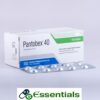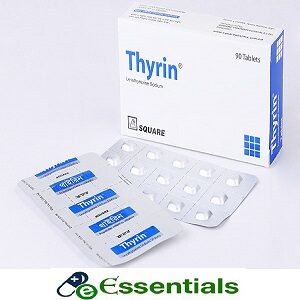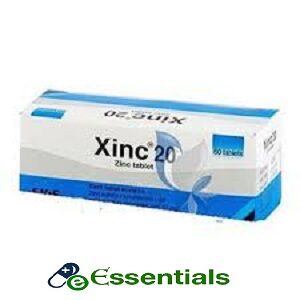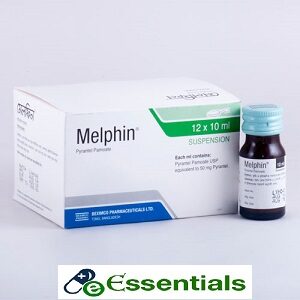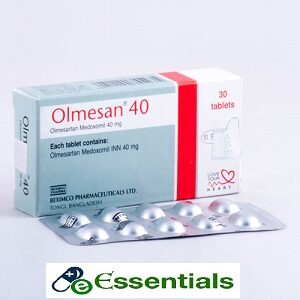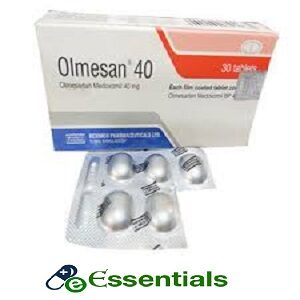Pantobex 20mg Tablet 1 pcs
৳ 5.00
Brand Name : Pantobex 20mg
Ingredients : Pantoprazole 20mg
Manufacturer : Beximco Pharmaceuticals Limited
Indications
Pantoprazole is indicated where suppression of acid secretion is of therapeutic benefit. Pantoprazole Is registered in the foltawing indications:
- Peptic ulcer diseases (PUD)
- Gastro-esophageal reflux diseases
- Treatment of ulcer resistant to M2 blocker
- Treatment of ulcer induced by NSAIDs
- Gl bleeding from stress or acid peptic diseases
- Eradication of Helicobacter pylori
- Zollinger-Ellison syndrome
- Prophylaxis for acid aspiration syndrome during induction of anesthesia
Therapeutic Class
Pharmacology
Pantoprazole is chemically a novel substituted benzimidazole derivative, which suppresses the final step in gastric acid production by forming a covalent bond to two sites of H+/K+ ATPase enzyme system at the secretory surface of the gastric parietal cell. This leads to inhibition of both basal and stimulated gastric effect that persists longer than 24 hours.
Pantoprazole is quantitatively absorbed and its bioavailability does not change upon multiple dosing. Pantoprazole is extensively metabolized in the liver. Almost 80% of an oral dose is excreted as metabolites in urine; the remainder is found in feces.
Dosage
Tablet:
The usual recommended adult oral dose is 40 mg given once daily, preferably in the morning with or without food. The duration of therapy is ranging from 2-8 weeks.
- Duodenal ulcers: Pantoprazole 40 mg tablet once daily for 2-4 weeks.
- Gastric ulcer: Pantoprazole 40 mg tablet once daily for 4-8 weeks.
- Reflux esophagitis: Pantoprazole 40 mg tablet once daily for 4-8 weeks.
- Ulcers induced by NSAIDs: Pantoprazole 40 mg tablet once daily.
- Maintenance therapy: Maintenance therapy should involve the lowest effective dose of the drug. Pantoprazole both 20 mg & 40 mg doses are safe and effective in maintaining patients with healed reflux esophagitis and PUD in remission.
IV Injection:
- Duodenal ulcer and gastric ulcer: 40 mg once daily for 7-10 days
- Gastroesophageal reflux disease associated with a history of erosive esophagitis: 40 mg once daily for 7-10 days
- Prevention of rebleeding in peptic ulcer: IV 80 mg, followed by 8 mg/hour infusion for 72 hours
- Prophylaxis of acid aspiration: 80 mg IV every 12 h for 24 h, followed by 40mg every 12 h
- Long-term management of Zollinger-Ellison Syndrome and other pathological hypersecretory conditions: 80 mg IV every 12 hours, may increase to 80 mg every 8 hours if needed, may titrate to higher doses depending on acid output.
Administration
DIRECTION FOR USE OF IV INJECTION: Pantoprazole lyophilized powder and 0.9% Sodium Chloride Injection is for intravenous administration only and must not be given by any other route. Pantoprazole IV injection should be given as a slow intravenous injection. The solution for IV injection is obtained by adding 10 ml 0.9% Sodium Chloride Injection to the vial containing powder. After reconstitution the injection should be given slowly over a period of at least 2 to 5 minutes. Use only freshly prepared solution. The reconstituted solution may be stored at room temperature (up to 30° C) for a maximum 4 hours.
DIRECTION FOR USE OF IV INFUSION: Pantoprazole IV infusion should be given as an intravenous infusion over a period of approximately 15 minutes. Pantoprazole IV infusion should be reconstituted with 10 ml of 0.9% Sodium Chloride Injection and further diluted (admixed) with 0.9% Sodium Chloride Injection or 5% Dextrose or Lactated Ringer’s Injection to a final volume of 100 ml. The reconstituted solution may be stored at room temperature (up to 30° C) for a maximum 4 hours prior to further dilution. The admixed solution may be stored at room temperature (up to 30° C) and must be used within 24 hours from the time of initial reconstitution.
Interaction
Contraindications
Side Effects
Pregnancy & Lactation
There are no adequate or well-controlled studies in pregnant women. Pantoprazole should be used during pregnancy only if the potential benefit justifies the potential risk to the fetus.
It is not known whether Pantoprazole is excreted in human breast milk. Pantoprazole should be used during lactation only if the potential benefit justifies the potential risk.
Precautions & Warnings
Overdose Effects
Storage Conditions
Brand
Beximco Pharmaceuticals Ltd



